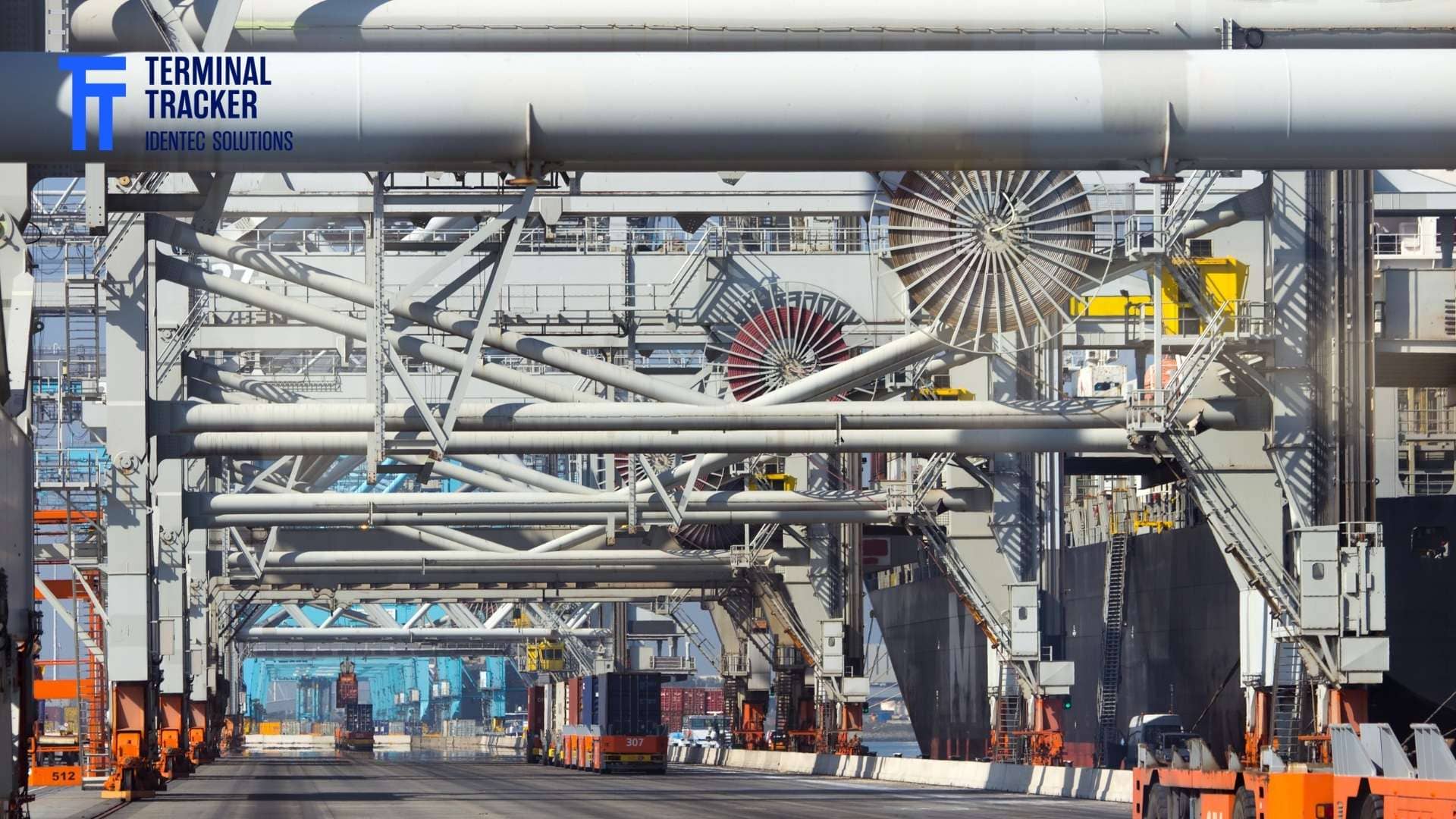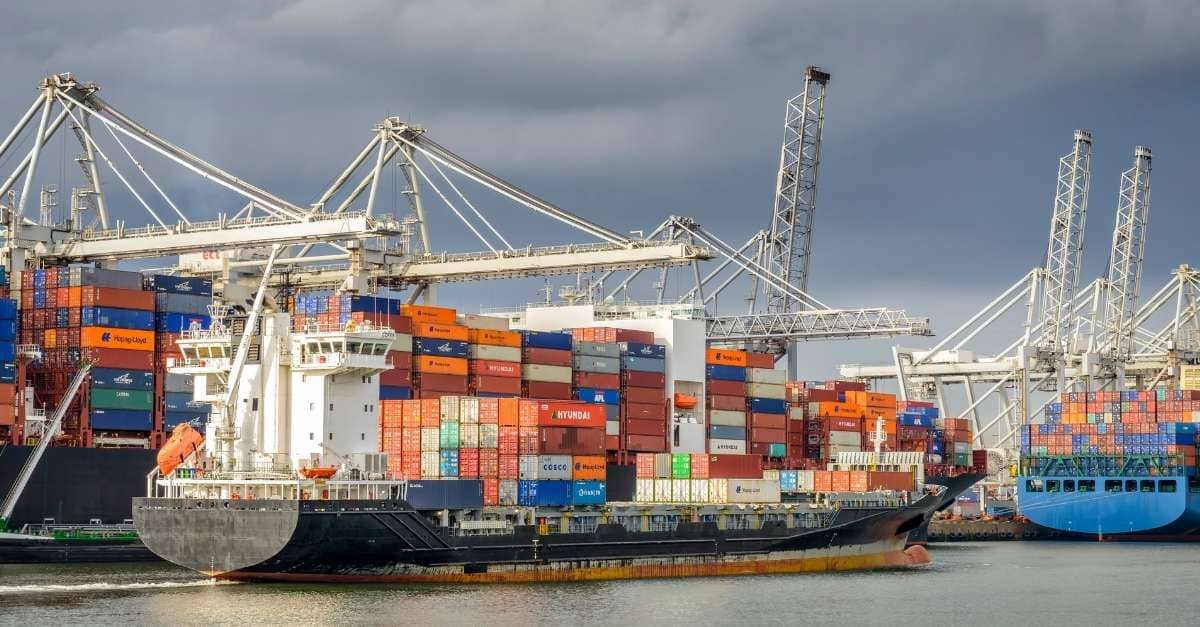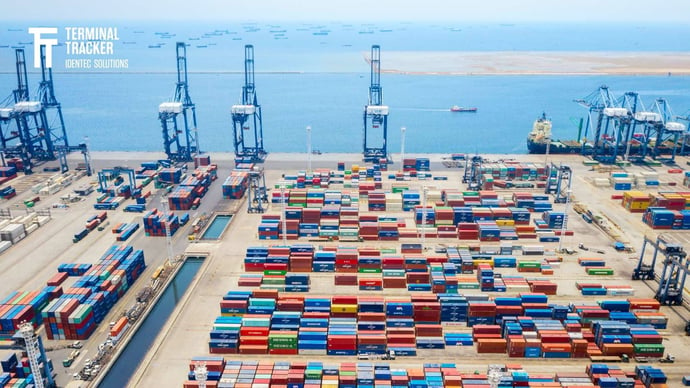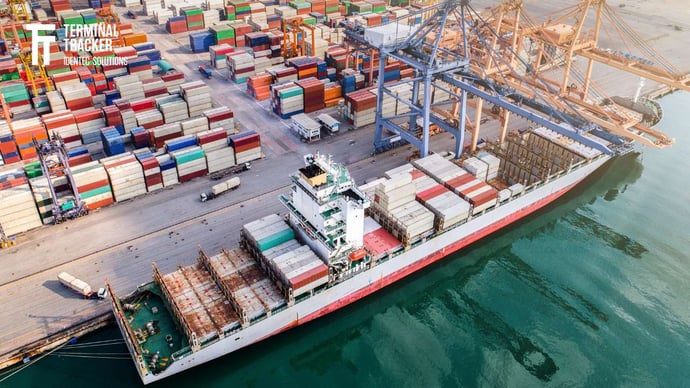How to improve container terminal equipment efficiency?
| Written by Constance Stickler

No video selected
Select a video type in the sidebar.
"The transition from manual to automated processes in container terminals not only boosts efficiency but also improves safety and reliability across operations."
Joel Reyes, Head of Professional Services Americas
Container throughput increased rapidly from 36 Mio. TEU in 1980 to approximately 849 Mio TEU in 2021. (1) Adapting to this change was an enormous task for a highly complex system such as container terminals. Since 2020, the operational challenge has become even more demanding as one disruption followed the other: COVID-19 with its massive, global impact - whose final effect is yet to be seen, the 2021 Suez Canal obstruction, the war in Ukraine, and a few minor hiccups like Brexit and strikes. All of these led to higher costs, combined by historically low global supply chain schedule reliability. Therefore, being as efficient as possible and optimising terminal operations are more critical than ever. Humans are good at ad hoc intervention and non-linear reasoning. On the other hand, machines and automation are good at repetitive functions, steady-state functions, and transition management.
How Do IIoT Solutions Enhance the Consistency of Manual Procedures in Terminal Operations?
With manual procedures, operators perform the necessary actions guided by their years of experience or a standard operating procedure (SOP) manual. As one might expect, the consistency with which manual procedures are performed can vary greatly depending upon the amount of experience and attention paid by the individuals carrying out these procedures. Sometimes, the written instructions haven't been kept up to date, forcing workers to rely more on personal experience than intended. Manual record keeping, which often accompanies manual procedures, can also vary in effectiveness and quality. However, even when electronic records for manual processes exist, their quality can also vary depending upon how well they were entered into the system and only reflect the procedures purported to be carried out. Often, there is no way to verify that the manual procedures followed were, in fact, consistent with printed SOPs.
Regardless of whether it is a standard process, the question is always what needs to be done, when, and how. Loading and unloading plans of vessels and intermodal transport such as trucks and rail are in the system (see also: Container handling trucks TOS integration); now, the appropriate container terminal equipment with the relevant accessories has to be in the right place at the right time. To do this, you need to know if they are available and where they are at the given time: this is where IIoT (Industrial Internet of Things) solutions come into play that are working parallel with existing Terminal Operating Solutions (TOS).
There are solutions that, with minimal hardware, can get accurate data on time for your whole port terminal operations. With the help of strategically positioned tags, transponders, and readers on vehicles, you can see their current location, how they got there, and any information that can be read from the PLC (Programmable logic controller). A significant advantage of these solutions is that they not only track the equipment but also plan its use, which is the first step to a successful and efficient operation. Every operation is different within terminals, so adaptability is the key.
Reefers (refrigerated containers) require special treatment - they need electricity to maintain the desired temperature or stay within the acceptable temperature range. In addition, their spaces are limited; therefore, it is essential that planning is carried out correctly so that no damage occurs to the cargo. Planning is also about the safety of the employees since refrigerated containers need a 400-volt power electricity supply that must be securely disconnected before the container can be moved.
Learn more about Port Terminal Automation.

How Can Container Terminal Equipment Efficiency Be Increased?
With current supply chain challenges, it is not unusual for containers to "overstay their welcome" in the yard. Despite commercial contracts and rules being in place, that was one of the most significant issues surfacing when Covid-19 lockdowns started. Terminals needed to be flexible and accommodating as much as possible. This led to high yard capacity and, therefore, slower productivity on both the quay and land sides, bringing efficiency to the forefront. As a result, many terminals have started looking into modernisation and process automation to cut waste. With procedural or process automation, the know-how and operational level of experienced operators can be incorporated into automatic sequences and used to standardise operating methods and improve the efficiency of all operators.
Of course, one must not forget the people, most vehicles need drivers, and some additional equipment has to be handled manually. Even in automated terminals, container terminal equipment cannot do without direct human intervention.
Regardless of your terminal's digitisation status, planners must observe the following points in the process of improving the efficiency of container terminal equipment:
1] Measure current productivity
"You can't manage what you can't measure." Measuring the productivity of container handling allows you to make operational changes, adding employees or equipment to meet deadlines. Understanding your workforce's productivity will also enable you to gauge overall efficiency and whether you can meet tight deadlines or take on new clients.
The more data you're able to collect, the more you know. Therefore, the first choice for measurement is a digital one: IIoT is the most comprehensive and accurate solution to keep track of your container terminal equipment utilisation at all times.
2] Usage trends analysis
Records of past and current usage of equipment help identify trends.
Trend analysis reveals which areas of your organisation are performing well and offer room for improvement. In this way, it provides valuable evidence to help better decision-making around your longer-term strategy and practices to future-proof your business.
3] Process planning
Planning, in particular, helps to examine the goal for its feasibility critically. As a result, it facilitates decision-making and allows setting a time frame by predicting when the company can achieve its goal. It also defines how to measure performance against the set goals and whose responsibility it will be.
4] Equipment localisation and coordination
A slight deviation from the schedule can greatly impact the operation. Every second counts: The faster you know where your idle and suitable container terminal equipment is and which one can be allocated right away, the quicker you can start the "clean up". Knowing the whereabouts of rented container terminal equipment is particularly important since delays in return may result in hefty reminder fees. And of course: If you know run time details, you know if it was worth renting it.
Read more about how ports are using Position Detection Systems.
5] Keep maintenance downtime as short as possible
Predictive maintenance allows for safety compliance, preemptive corrective actions, and increased asset life. By looking ahead and knowing what failure is likely to occur, preemptive investigations, maintenance schedule adjustments, and repairs can be performed before the asset fails. On average, predictive maintenance increases productivity by 25%, reduces breakdowns by 70%, and lowers maintenance costs by 25%.
6] Safety
Port safety is one of the most important, if not the most important, topics. First, all people at the port must be protected as best as possible; second, it is also about the safety of the equipment. Operational safety is defined as the absence of unacceptable risks, injury or harm to the health of humans, whether direct or indirect, resulting from damage to equipment or the environment. In addition, proper use of well-maintained equipment protects containers and cargo from damage that can be extremely costly.
7] Training
Training is critical to improving equipment efficiency. Operators must have the skills and knowledge needed to operate advanced technology and automated systems. Comprehensive programs ensure everyone is comfortable using sophisticated equipment, understands the solutions, and follows current standard operating procedures (SOPs). When well-trained, personnel can effectively manage equipment and also troubleshoot themselves, reducing downtime. The safety culture taught through training promotes compliance, which reduces accidents.
8] Change management
Change management is essential for a successful transition from manual to automated processes. This means fully involving and supporting all stakeholders. All benefits of automation and timelines must be clearly communicated, while concerns must be addressed. To keep disruption to a minimum, a gradual integration should be considered. Monitoring and feedback loops help identify problems early and make necessary adjustments possible.

TAKEAWAY
Increasing container terminal equipment efficiency is vital not only from an economic point of view. Container terminals are the global supply chain's bottlenecks and should clearly support frictionless cargo transhipment. Moreover, for the individual container terminal operator, using IIoT increases the potential for productivity optimisation. It also improves the safety of dockers as it helps to invest in the proper container terminal equipment.
Dive deeper into one of our core topics and learn more about Smart Port
Glossary
Intermodal transport refers to the movement of goods using multiple modes of transportation (e.g., trucks, trains, ships, or planes) within a single container or load unit without handling the cargo itself during transfers. This method enhances efficiency, reduces handling costs, and improves cargo security. It is widely used in global logistics to streamline supply chains and optimise delivery. (2)
A Standard Operating Procedure (SOP) is a written document that provides detailed, step-by-step instructions for performing specific tasks or processes consistently and efficiently. SOPs are widely used across industries to ensure compliance with regulations, enhance quality control, reduce errors, and improve operational efficiency. They serve as a reference for employees to follow standardised methods, promoting safety and uniformity in work practices. (3)
Sources:
(1) https://transportgeography.org/contents/chapter5/intermodal-transportation-containerization/world-container-throughput/
(2) Intermodal Freight Transport and Logistics by Jason Monios, Taylor & Francis Inc, 2017
(3) Writing High-Quality Standard Operating Procedures: A Practical Guide to Clear, Concise, and Correct SOPs by Atul Mathur, CreateSpace Independent Publishing Platform, 2017
Note: This article was updated on the 21st of January 2025

Author
Conny Stickler, Marketing Manager Logistics
Constance Stickler holds a master's degree in political science, German language and history. She spent most of her professional career as a project and marketing manager in different industries. Her passion is usability, and she's captivated by the potential of today's digital tools. They seem to unlock endless possibilities, each one more intriguing than the last. Constance writes about automation, sustainability and safety in maritime logistics.
Related Articles
Related Product




